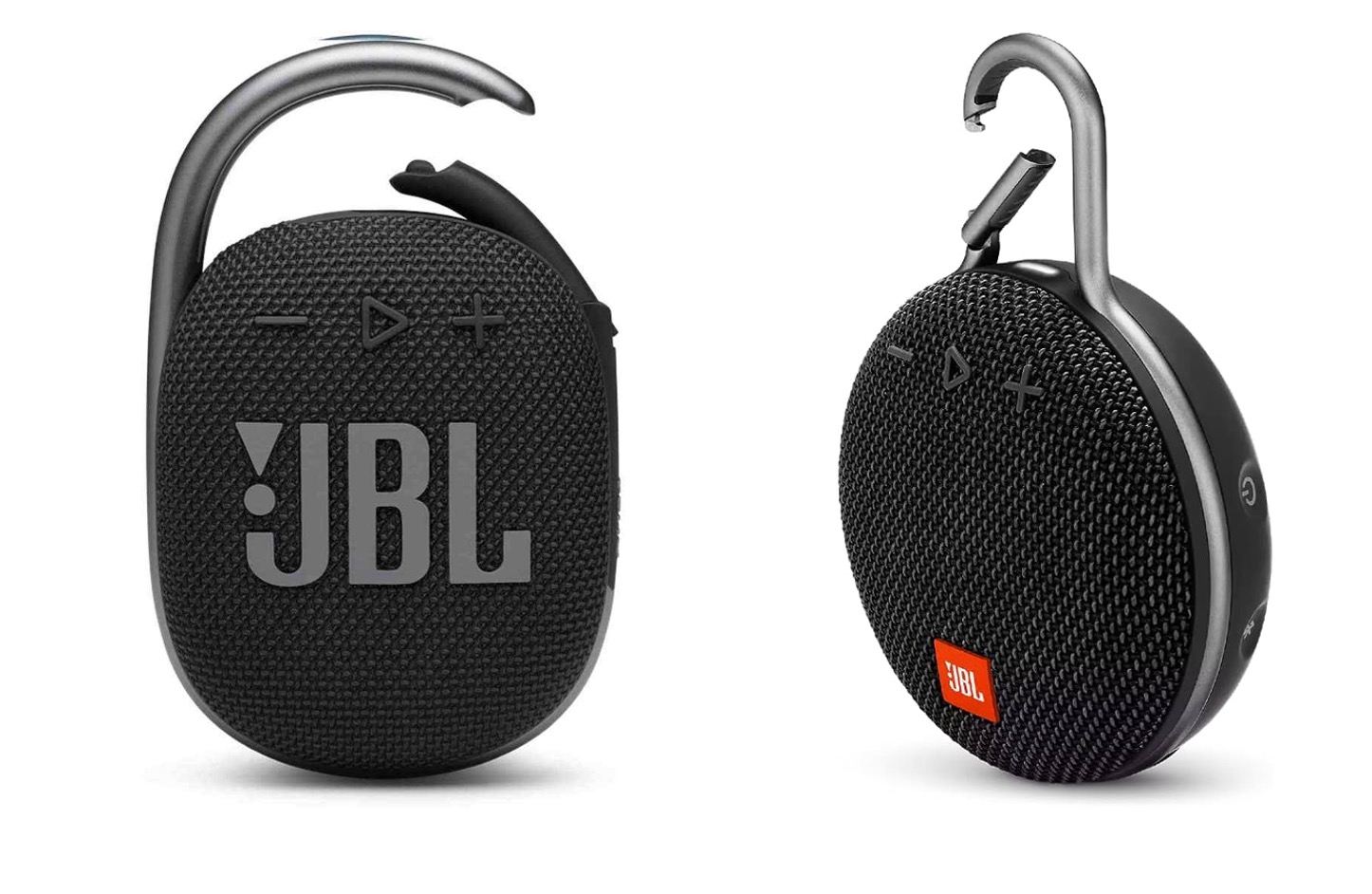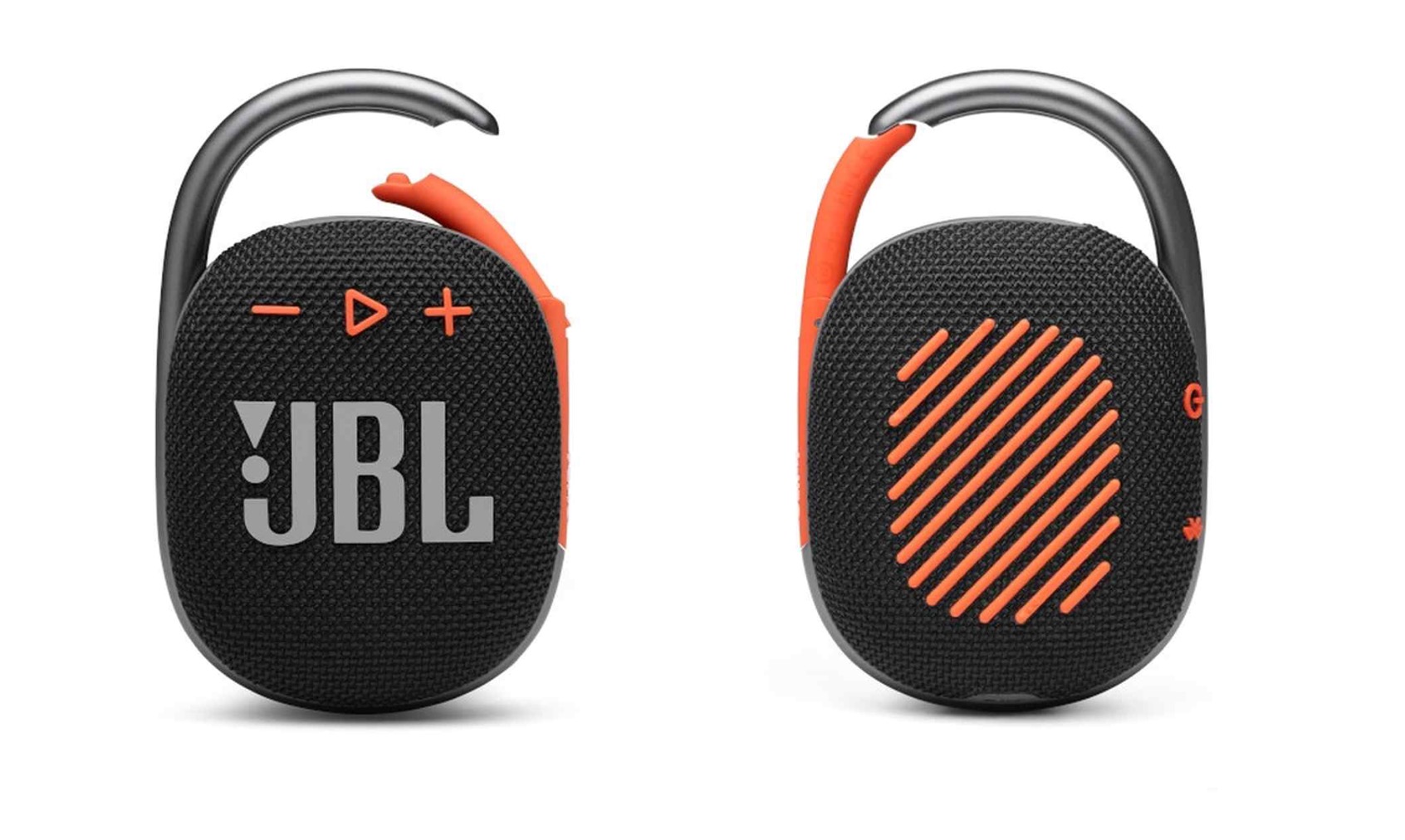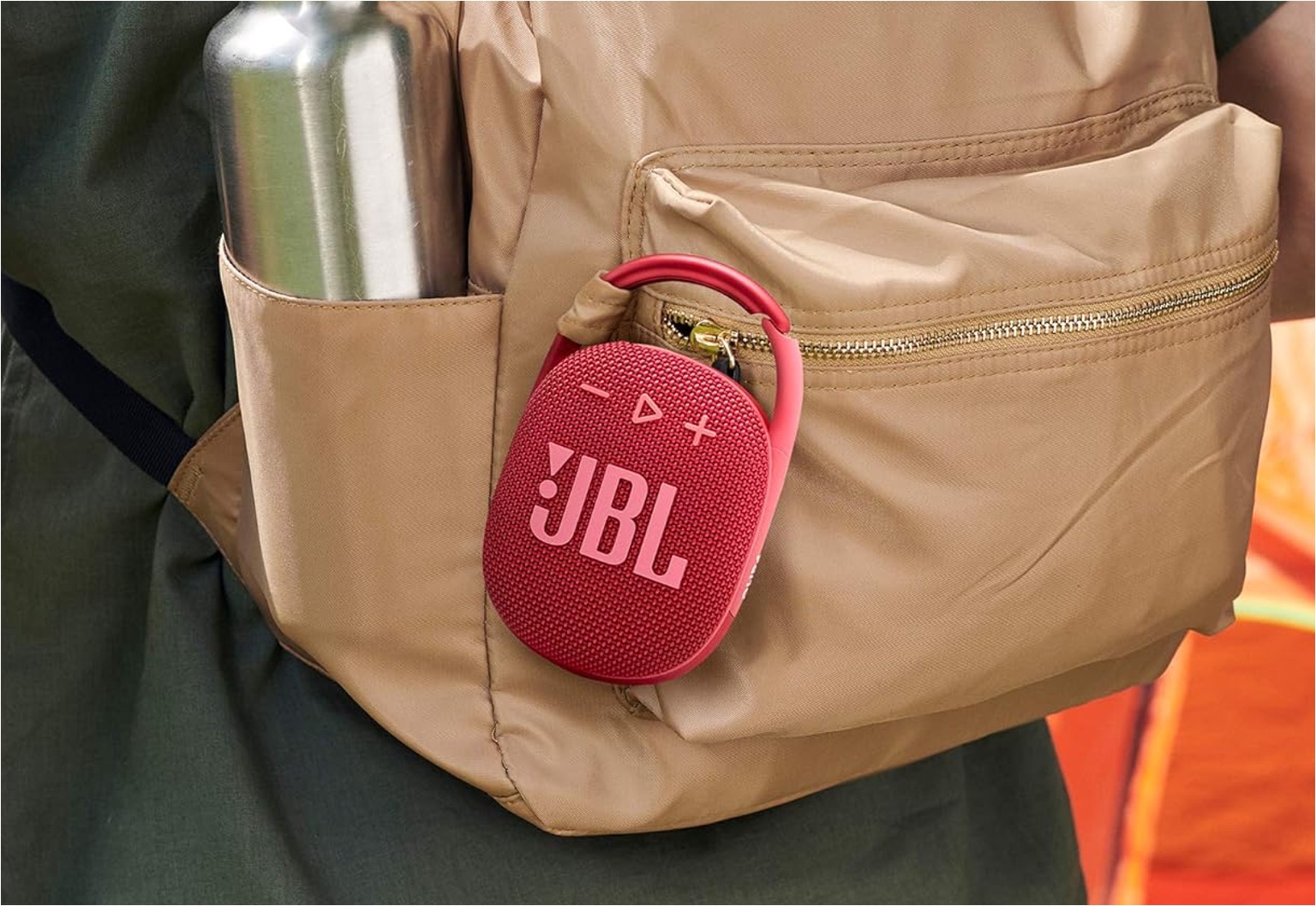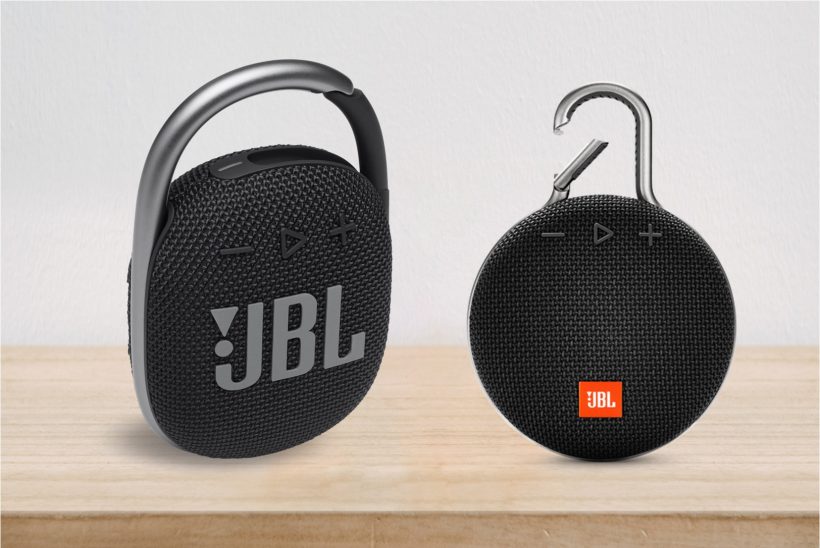In this comparative review, we compare the JBL Clip 4 with the Clip 3 side by side to see which one delivers better sound performance and bass. The JBL Clip 4 is JBL’s latest iteration of its smallest portable Bluetooth speaker designed for rugged outdoor listening. The JBL Clip 4 delivers really nice audio sound performance with punchy bass from a compact form factor, and it has an ultra-portable design with its signature clip that you can use to attach the speaker to your backpack. The JBL Clip 4 comes with a redesigned carabiner clip that is integrated into the speaker itself for extra protection, and delivers pretty solid sound performance.
The JBL Clip 4 has a few noticeable improvements over the Clip 3 speaker. The Clip 4 speaker delivers much louder sound performance at 5W output compared with the Clip 3’s 3W output, and has a wider frequency range from 100 Hz to 20 kHz compared to the Clip 3’s 120 Hz to 20 kHz. In terms of bass response, we found that the Clip 5 delivers slightly deeper and punchier bass response despite its small size – the bass sounds substantially louder and has more depth than the Clip 3 speaker. The JBL Clip 4 also uses the latest Bluetooth 5.1 version as compared to the Clip 3’s Bluetooth 4.1 which provides much higher quality wireless music streaming.

Sound Performance
One thing we noticed when comparing the Clip 4 with the Clip 3 side by side is that the Clip 4 is that the Clip 4 looks much bigger with an integrated carabiner clip (the carabiner clip does not protrude out like the Clip 3 speaker). The Clip 4 delivers much louder sound performance than the Clip 3 with up to 5W of output power, and you can blast music on the Clip 4 without hearing any distortion. The Clip 4’s bass is also noticeably louder and more refined, and has reasonably greater depth as compared to the Clip 3’s low-end bass response. One thing that we liked about the Clip 4 is that its lower-end frequency range is expanded down to 100 Hz as compared to the Clip 3’s 120 Hz, allowing it to deliver deeper and more rounded bass notes.
We played a couple of EDM and hip-hip sound tracks such as Golden Hour by JVKE and Feather by Sabrina Carpenter and they sounded superb on the Clip 4. The bass notes feel much more rounded with greater depth, and you can hear the midrange more clearly with better presence in the upper frequency ranges. Vocals sounded much better on the Clip 4 – they sounded much more refined and well-developed, and are less “tiny” as compared to the Clip 3. Our overall impression is that the JBL Clip 4 sounds much better than the Clip 3 with louder sound, greater clarity and more pronounced midranges. The Clip 4 sounds much more engaging and fun to listen to, and the bass notes are definitely deeper and more punchy on the Clip 4.
The JBL Clip 4 is the clear winner when it comes to sound performance and better bass response. The Clip 4 can also handle higher volume output much better without any distortion and has noticeably louder volume than the Clip 3 speakers.

Design and Specifications
The JBL Clip 4 has a few noticeable improvements over the Clip 3 in terms of specs. The Clip 4 comes with an integrated carabiner clip that feels much more solid and sturdy as compared to the Clip 3’s protruding carabiner clip. This makes the Clip 4 speaker comparatively larger and it also comes with its own passive bass radiators which improve the bass and low-midrange clarity. The Clip 4 also uses the latest Bluetooth 5.1 codec for cleaner sound transmission as compared to the Clip 3’s Bluetooth 4.1, and has a wider frequency range from 100 Hz to 20 kHz, adding an extra 20 Hz of depth in the low-end frequency range. This actually makes a substantial difference when you listen to the Clip 4 and the Clip 3 side by side – the Clip 4 can tackle bass notes better and deliver more depth in the low-end with punchier bass. The JBL Clip 4 also uses the latest USB-C charging port which is better than the JBL Clip 3’s USB Micro-B power input. Both speakers come with a built-in battery that delivers up to 10 hours of listening time on a single charge.
Having said that, one of the features that the JBL Clip 4 lacked was the built-in microphone on the Clip 3 which enables it to take hands free calls. This means that you would not be able to take any calls on the Clip 4 which we found to be a rather useful feature especially when using this speaker in an outdoor setting.
The JBL Clip 4 is a pure Bluetooth speaker and does not come with any 3.5mm audio inputs, while the Clip 3 supports both 3.5mm auxiliary and Bluetooth. In our view, the decision to remove the 3.5mm audio input from the Clip 4 is a good one because most people do not use 3.5mm cables in outdoor environments – it helps to save space and simplifies the overall design of the Clip 4 speaker.

Noticeable Improvements
One noticeable improvement that we should mention is that the Clip 3 sometimes has a low-level hissing noise if you are not streaming any music to it. The Clip 4 speaker, on the other hand, does not have any hissing noises and remains silent when you are not streaming any audio to it. The Clip 4 can also handle loud volume levels much better and does not have any distortion at >80% volume level, while the Clip 3 has noticeable distortion at higher volume levels. This is possibly due to the removal of the 3.5mm input on the Clip 4 which may cause distortion in the upper-mids and treble ranges.
We also liked the fact that the Clip 4 carabiner has a wider opening and much larger space that makes it easy to manoeuvre onto some objects (such as metallic grips) which the Clip 3 carabiner could not clip on. The Clip 4’s opening is about 5/8” wide and is larger than the Clip 3 which has a 9/16” opening.
Both the Clip 4 and Clip 3 speakers are IP67 waterproof and dustproof and designed to survive the outdoor elements, making them great speakers to bring outdoors where there is exposure to rain or sand. Both speakers roughly weigh the same with the Clip 3 at 0.5 lbs and the Clip 4 at 0.52 lbs.
The Verdict?
We found the JBL Clip 4 a much better overall speaker as compared to the Clip 3 with many noticeable improvements. The Clip 4 speaker delivers much louder sound performance with a 5W output, and comes with an improved ultra-portable design with an integrated carabiner clip that looks and feels much more sturdy and has more space inside the carabiner. The Clip 4 also delivers much better bass and does not distort at all >80% volume; it also resolves any hissing static noises that you might hear when no music is playing on the Clip 3. Both the Clip 4 and Clip 3 speakers are waterproof and come with a built-in battery that delivers 10 hours of playtime on a single charge, but the Clip 4 also has the latest Bluetooth 5.1 codec and a wider frequency response in the low-end bass (down to 100Hz) as compared to the Clip 3. If you have the JBL Clip 3 speaker and want to upgrade, the JBL Clip 4 is definitely worth the upgrade due to the improvements in sound quality and has a better overall design with an improved carabiner clip

